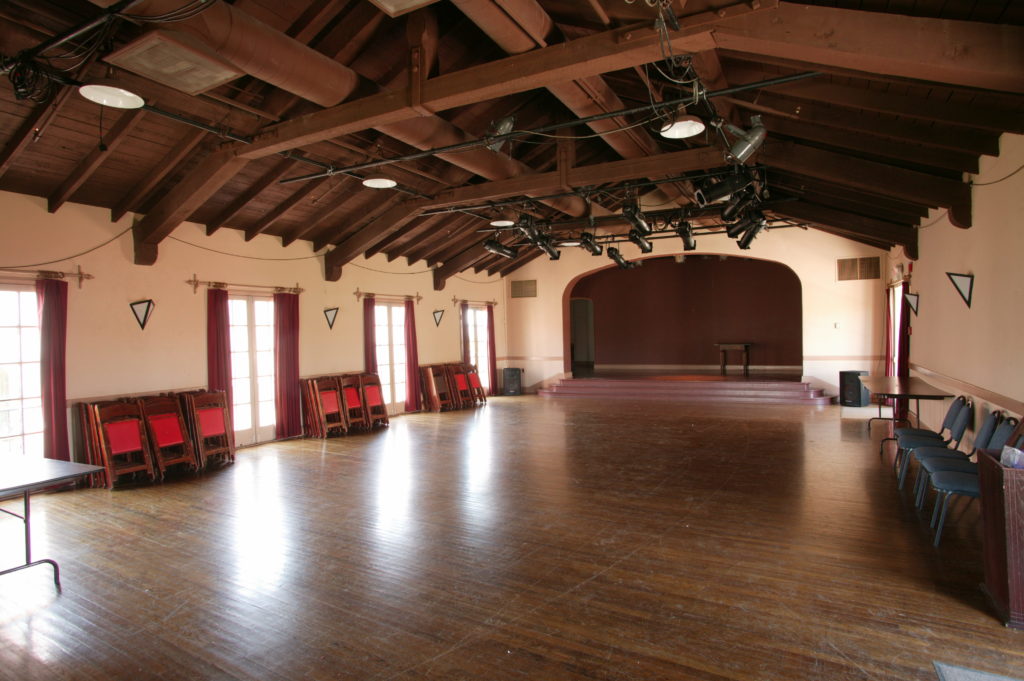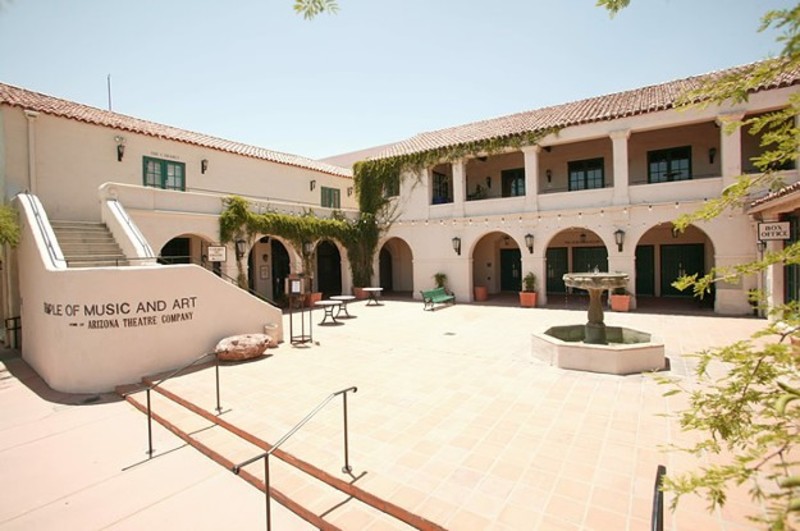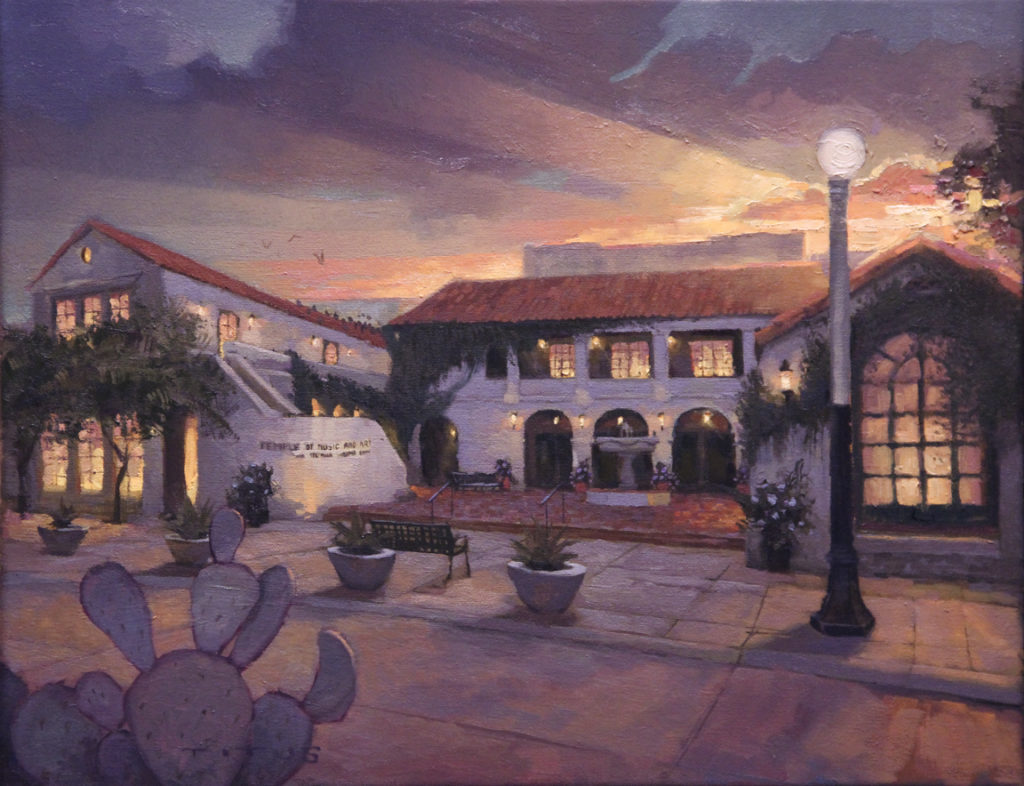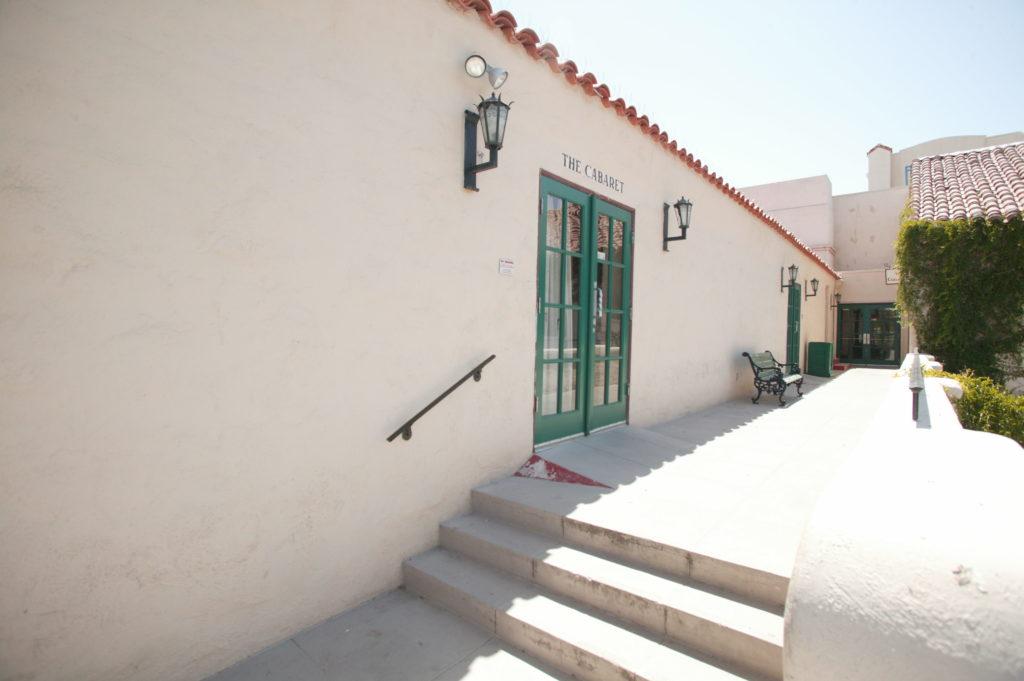Venue Spotlight: Arizona Theatre Company’s Cabaret

Today’s venue spotlight goes to a new venue addition to our festival: the Arizona Theatre Company’s (ATC) Cabaret! This space is part of the Temple of Music and Arts located on 330 S. Scott Ave. The Cabaret is a separate entity from ATC’s main stage, The Alice Holsclaw Theatre, and it is rented by many local theatre productions. This performing space is a blank canvas that can fit up to 90 seats. Productions can be contained to the raised stage area or be set up as a thrust stage. The Cabaret houses many Tucson community theatre productions each year, as well as multiple shows put on by the ATC Teen program during the school year.
We are excited to partner with the Temple of Music and Arts because, like most of our venues, it is an important part of Tucson history. The building was first proposed by Madeline Heineman who founded the “Saturday Morning Music Club” in 1907. She wanted to bring the music and art scene she loved in LA to Tucson and worked with the group to raise money for a space dedicated to the arts in Tucson.
Despite initial funding issues, and the death of Madeline’s husband, construction was initiated on 1926. Alexander Berger, a Virginian cellist who spend the winters in Vail, helped the “Music Club” secure a mortgage from the Juilliard Foundation, which had never before lent to an organization in the west. The Temple of Music and Art opened in October of 1927 and its grand opening included a week of recitals, exhibits, speeches, plays, organ concerts and fashion shows.

However, within a year of the Temple began to falter. A deal was struck with man named A.H. Yeomans, who would lease the building and convert it into a “talkie motion picture theatre.” However, in a matter of months, Yeomans disappeared, leaving enormous bills behind. Shortly after, with the stock market crash signaling the start of the Great Depression, and the Temple of Music and Art was declared an utter financial failure.
Over the next few decades the Temple faced a number of transitions. The “Saturday Morning Music Club” tried to sell and lease the temple to the City of Tucson but they refused their offers. In 1972 the Temple was finally sold to California theatre operators, who renamed the building “Cine Azteca” and promoted Spanish-language films. The space was foreclosed six years later and sold again to Steve and Maria Hutchinson who converted the temple into a restaurant and classic-film venue, restoring the name to “The Temple of Music and Art.” Their business also faltered and in 1982 the Temple was sold to a group of Colorado investors who also maintained the Temple as a movie theatre. However, two years later they announced their plan to convert the five-story fly loft behind the proscenium into law offices, along with the rest of the building.
The community rallied together to fight the de-conversion of the Temple Stage after Howard Allen wrote an editorial in the Tucson Weekly, titled “The Desecration of the Temple.”
“There have always been three different interests in the Temple: its dollar value as a real estate investment, its value in preservation terms as an historic building and its value as a performing arts complex. All of these interests have not coincided with one owner since the first owner in 1927, the Saturday Morning Music Club.”
– Howard Allen, Tucson Weekly, 1984
However, there was nothing to be done. Even an offer from the Tucson City Council wasn’t enough to halt the demolition. Despite everyone’s best efforts, the backstage demolition commenced, with the removal of all theatrical rigging and equipment. But then the property manager, Mazer, declared bankruptcy and left town. Then the Temple was condemned for safety and fire violations after an inspection found a jury-rigged gas meter on the site.
Finally, in 1986, the City Council voted to make the Temple of Music and Art a public facility and the new home of the Arizona Theatre Company. With the help of a generous gift from Alice Holsclaw, the building was brought up to code. In 1990, Arizona Theatre Company presented its first public
performance in the Temple of Music and Art: Amadeus, paying homage to the building’s original purpose as a haven for classical music.
“At last, the Temple is stewarded by a nonprofit arts organization, as Madeline Heineman wished. Her portrait, restored in the 1980s, still hangs in the Temple’s lobby, presiding over her legacy. Audiences flow past her into the spacious courtyard and the Temple Lounge, a restaurant operated by ATC in the courtyard’s south wing, or the box office on the north side. The Etherton Gallery curates the upstairs hall overlooking the courtyard, while the Cabaret hosts a variety of local groups and community theatre productions. Between 1990 and 2015, ATC has produced or presented 168 shows on the Temple’s stage. The cultural landmark has been not only preserved, but now thrives as a hallmark and hub of Tucson’s vibrant artistic community.” – Wrentmore, 2015

Five shows will be taking place here during our 2020 Tucson Fringe Festival. The Cabaret is located up the stairs located on the left side of the courtyard, perpendicular to the art gallery on the second floor. There is also an elevator available making this venue wheelchair accessible. Visit the ATC website to learn more about their current productions.
